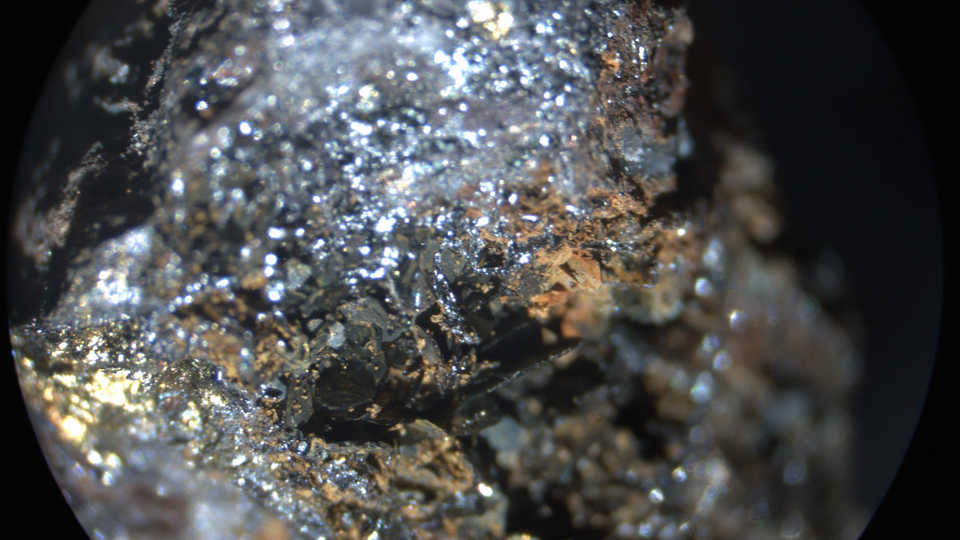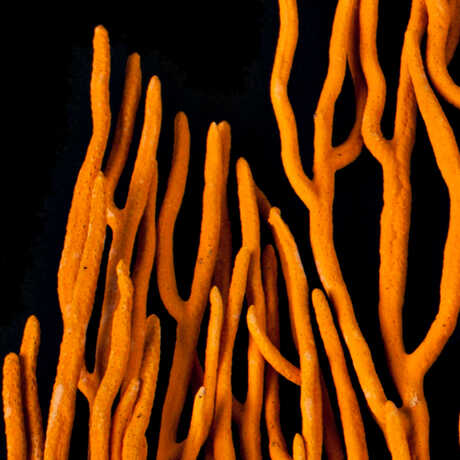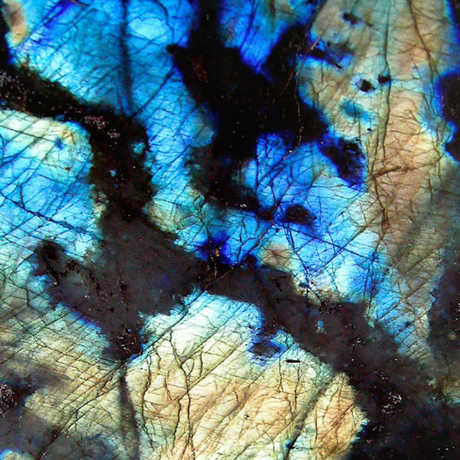Science News
Mineral Mondays: Oxides and Hydroxides

The world we live in is built atop the industrial innovations made possible by oxides and their counterpart, hydroxides. Quite literally, in fact—steel belongs in this family! They are also plentiful—the second most common constituent of Earth’s crust.
If you could peer into the oxide family of minerals at a molecular scale, you would find structures of tightly knit oxygen atoms with metal or semimetal atoms woven in the spaces between. There are two groups of oxides: simple oxides, with one type of metal or semimetal added, and complex oxides where more than one metal can be integrated into the molecular structure. Their counterparts, the hydroxides, are composed of metals that attach to a highly reactive hydroxide ion (OH). Most hydroxide minerals form at lower temperatures and are softer and less dense than oxides.
While these include the rubies and sapphires (both color varieties of the corundum mineral species), spinel, and chrysoberyl that adorn the crowned heads of royal dignitaries, minerals like chromite (the most important ore of chromium), ilmenite (titanium oxide), and hematite (iron oxide) have provided us with some of the greatest innovations ever created. From cave paintings to satellites, iron oxides in particular have played an important role in the cultural, scientific, and industrial development of civilizations, old and new.
One of the most common and most significant sources of iron is hematite (Fe₂O₃). A simple oxide, its structure is composed of two iron cations attached to three oxygen anions. Hematite forms under various geologic conditions, and so is found in lots of different types of rock. Sometimes it combines with other minerals, such as magnetite (another simple iron oxide) and quartz.
Banded iron formations mark another important deposit of hematite. As cyanobacteria in Earth’s early oceans began to create oxygen over two billion years ago, a reaction occurred between their oxygen byproduct and iron in the oceans. This left layers of dark magnetite and red, hematite-stained chert on the ocean floor, an ever-present reminder of a world just beginning to exhale.
Hematite comes in many forms. Its structure can be flakey or massive, its luster metallic or earthy, and its color dark gray to silver or reddish-brown. It can take a botryoidal form known as a kidney stone. Sometimes flat hematite crystals form flower-like clusters called roses. Regardless of the form it takes, hematite is recognizable by a distinguishable reddish-brown streak that appears when the mineral is struck across a ceramic plate.
This reddish-brown streak also gives insight into the mineral’s cultural significance.
The name hematite is derived from the Greek word for blood, and when crushed, its dark red powder can be used to color everything from bricks to make-up. Prehistoric pigments made from this crushed iron oxide—or red ochre, as it’s known in the art world—adorn the walls of sites such as the Chauvet Cave in France. As art and culture progressed, so did the use of red ochre. For centuries, painters and other artists have used tubes of the pigment to illustrate their ideas. Renaissance artists including Giorgio Vasari used red ochre to decorate the halls of Florence in the 16th Century, and painters such as Johannes Vermeer mixed red ochre into his pictures in 17th Century.
Though humans have been mining hematite and other iron oxides for centuries, contemporary uses for it have developed over the past several decades. We use iron oxides in the production of many household items including mattress springs, vacuum cleaners, and dishwashers. Arguably the most important use of iron oxides today is their use in the production of steel (an alloy of iron and carbon); roughly 98 percent of the iron ore mined in the US is used in steel production.
Without oxides and hydroxides, we could not enjoy views of the Transamerica building (whose foundation is built with steel and concrete) along our skyline, nor could we savor a nice, strong cup of coffee—thank you, espresso machines!
Captivated by corundum? Intrigued by ilmenite? Explore oxide and hydroxide minerals at the Academy’s upcoming Gems and Minerals Unearthed exhibit opening on September 30.
Image: Hematite through a stereo microscope, tlwmdbt/Flickr


